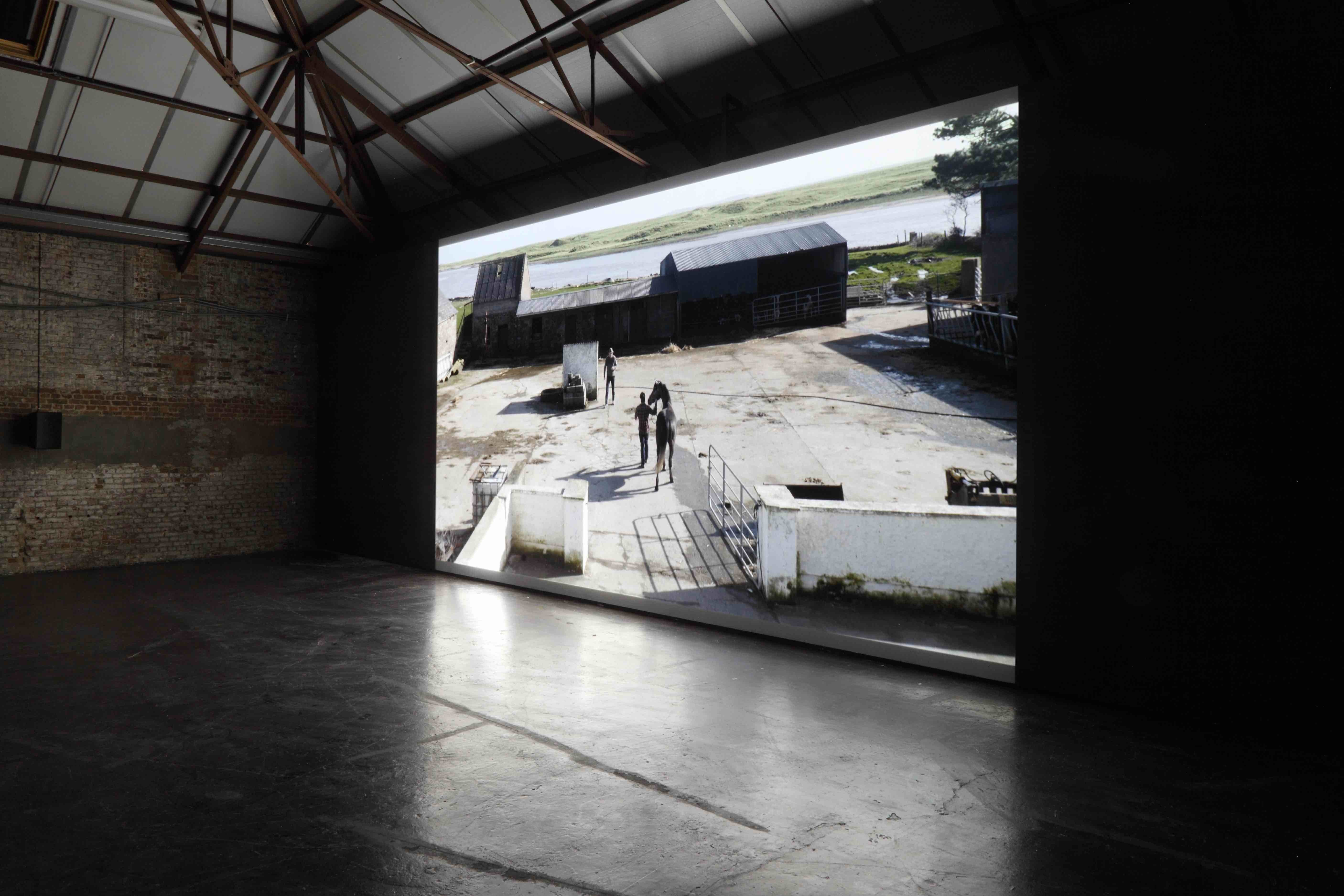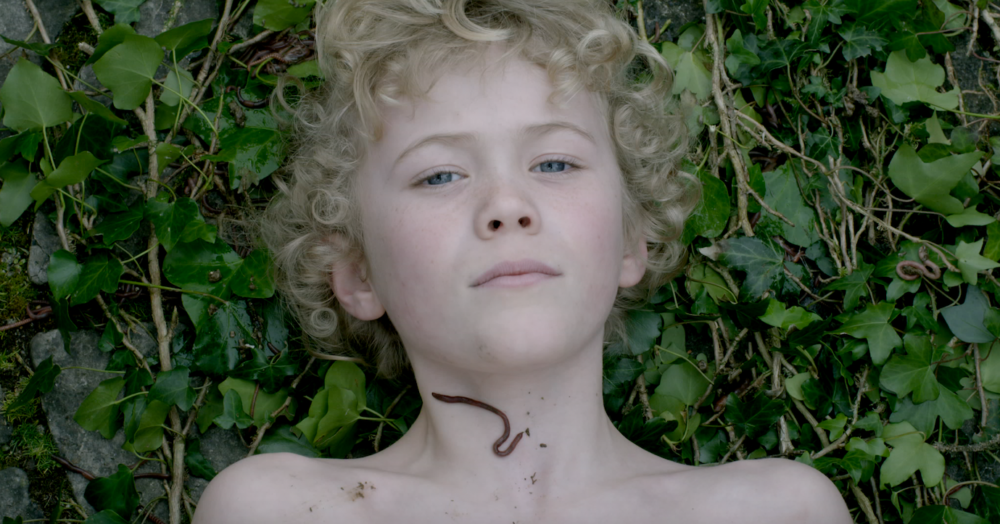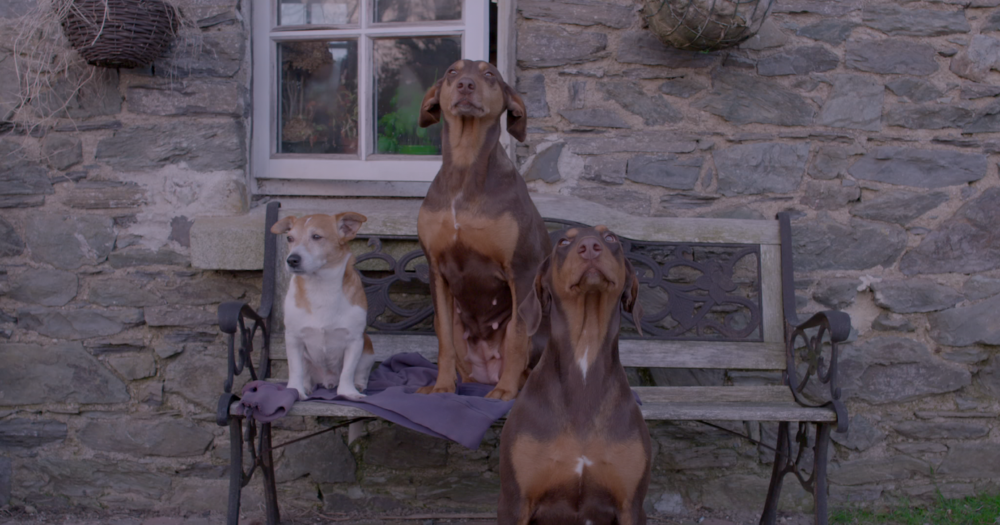The Rabbit and the Teasel (triptych, part 1) builds an extraordinary album of a family’s devastation by the savage demands of rearing livestock on a small farm. Dietvorst invokes and honours the lyrical folkloric tradition of Irish story-telling and music, as well as drawing on framing and editing devices common to experimental films by artists such as Mikhail Karikis and Patrick Keiller. Working with a non-professional cast, Dietvorst exacts an emotional rigour and claustrophobia that recalls the intimacy of John Cassavetes films (…). An adult recalls his childhood in ‘The Rabbit and the Teasel’ through a tender narrative voice over (…). The film chronicles the young boy’s silent grief when his mother leaves home and his taciturn father endures relentless livestock loss and existential anguish. Dietvorst’s vision uses line, colour and the position of the horizon to set the rich materiality of the milieu against the emotional poverty of the family’s situation. (…) Dietvorst’s editic images are seductive without a whiff of sentimental idealisation of bucolic life. (…) Dietvorst shapes our shift between memory’s free-floating mood and colour and the ordinary, everyday routines of farming life. You could argue that this movement is also one of form between abstract visual decisions and those in the representational realm, with the change from dreamtime to real time blurring and bleeding as we watch. Dietvorst’s approach sets up a captivating interplay between reflective and performative memory. An overlap between fact and fiction, between documentary action and reconstruction teases out questions of truth and challenges the role of the spectator and what Dietvorst asks of us.
From: In Want of Fox, the work of Els Dietvorst by Cherry Smyth, 2019.
The Rabbit and the Teasel, 2014, triptych, part I, 00:53:00, color, sound, digital file.
Copyright Els Dietvorst.



Fiction and autobiographical elements smoothly mingle in a lyrical tale that drags the viewer into a universe of beauty, death, and decay. A masterful narrative, an extremely accurate work on the texts and the powerful aesthetics of timeless rural landscape, perfectly combine with the slow and relentless pace of remembrance and the melancholy of a lost innocence. (Paolo Moretti, Catalogue Visions du Reel, Nyon.)